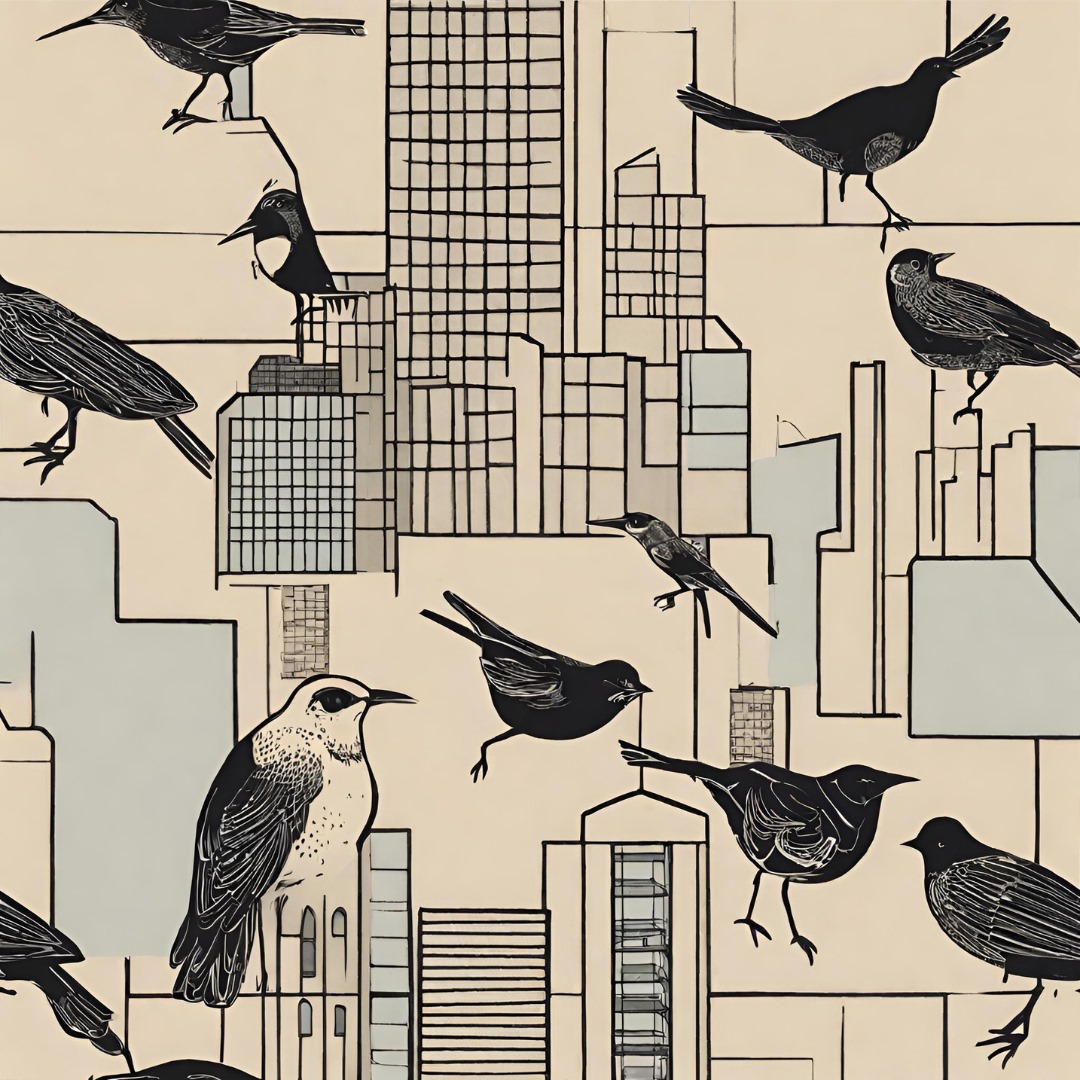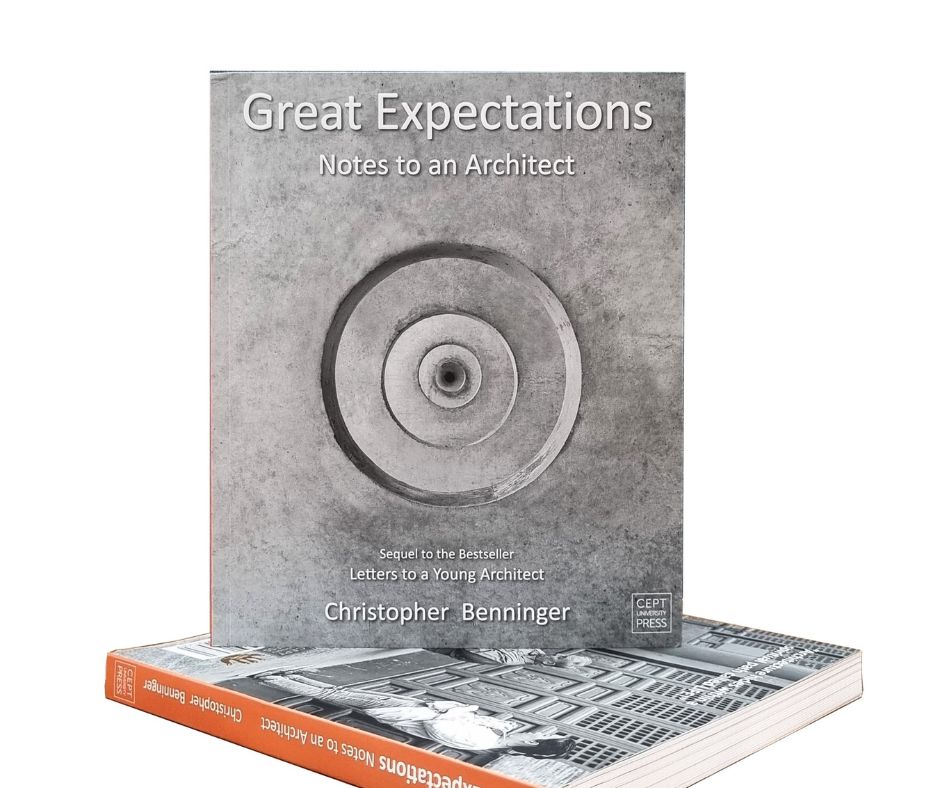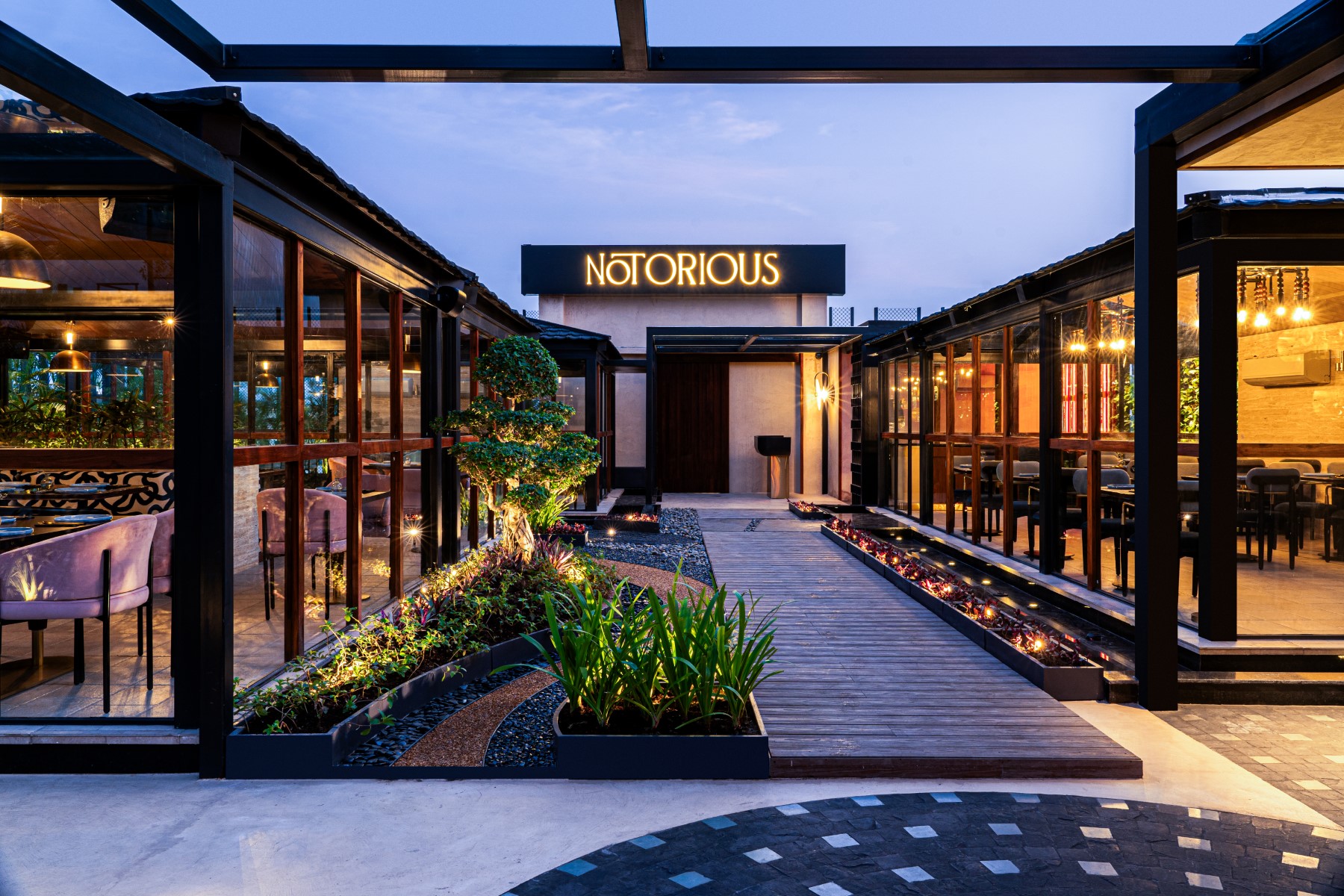As the sun rises over the bustling cityscape, a symphony of chirping birds fills the air, weaving nature’s melody into the urban fabric. The coexistence of avian species with human inhabitants is a testament to the adaptability and resilience of nature in our ever-expanding cities. In the pursuit of inclusive and sustainable city design, avian urbanism emerges as a transformative approach that harmonizes human needs with the ecological requirements of avian species. With a growing recognition of the importance of biodiversity, cities worldwide are embracing avian urbanism, crafting urban environments that foster avian well-being while accommodating human development.
Avian urbanism is an innovative approach to urban design and planning that aims to create bird-friendly cities while maintaining a harmonious balance between urban development and the preservation of avian habitats.
By strategically developing habitats, resources, and infrastructure that cater specifically to the needs of birds, this approach fosters their presence and well-being within urban settings. It encompasses key principles such as the preservation and enhancement of avian habitats, the reduction of hazards such as bird collisions, and the creation of ample foraging and nesting opportunities within the urban landscape. Through careful consideration of avian requirements, avian urbanism seeks to shape cities where the feathered population can thrive while accommodating human needs, thus striking a delicate equilibrium that results in sustainable and bird-friendly urban environments.
Avian species play a vital role in urban ecosystems, contributing to seed dispersal, pollination, and insect control, which promote the overall health and balance of urban environments. Birds also serve as indicators of environmental health, reflecting the quality of habitats and the ecological condition of cities. By observing bird populations and their behaviors, researchers and urban planners can gain valuable insights into the state of urban ecosystems, identifying areas in need of conservation or improvement.
Building upon this understanding, avian urbanism emphasizes designing cities with avian well-being in mind, transcending ecological balance alone. Timothy Beatley’s book, “The Bird-Friendly City: Creating Safe Urban Habitats,” further highlights the significance of abundant bird life in cities, acknowledging their profound impact on the human experience, infusing urban spaces with delight, awe, and a sense of connection to the natural world.
Connecting the importance of avian urbanism with architectural traditions, Asian cultures have long demonstrated a profound sensitivity towards avian life.
In ancient Persia (modern day Iran), people recognized the immense value of pigeons and ingeniously constructed pigeon towers, also known as “dovecotes”. Isfahan, a city famous for its rich tradition of these towers, still preserves most of the structures dating back to the 17th century. These purposefully designed towers served as hubs for up to 15,000 pigeons, generating copious amounts of fertilizer with their feces for the local regions, enriching agricultural output and showcasing the intricacies of vernacular Persian architecture adapted to suit avian needs.

Source – https://architizer.com/blog/inspiration/stories/avian-architecture-building-for-birds/

Source: https://www.atlasobscura.com/places/pigeon-towers-iran
On another note, as a remarkable contrast to anthropocentrism, Turkey’s cultural heritage presents an example of avian consideration that transcends human interests. For nearly eight centuries, the country’s deep-rooted love for avian life has manifested through the construction of micro-architectural birdhouses adorning the facades of various structures, including mosques, madrasahs, and palaces. This longstanding tradition showcases a unique blend of artistry and appreciation for nature, with elaborately designed “kuş köşkü,” (bird palaces), reflecting the opulence of their surroundings, while more functional and simplistic “kuş evi,” (bird houses), offer essential nesting spaces for feathered inhabitants. Shedding off the utilitarian purpose, these birdhouses were borne out of sheer love and compassion of the people towards their winged companions.

Source : https://www.thisiscolossal.com/2017/07/the-ornate-bird-palaces-of-ottoman-era-turkey/

Source : Author
In India, the Kumaoni architecture of Uttarakhand, characterized by Kath-Kuni houses with sloping roofs, incorporated overhanging eaves and small gaps or openings, creating nesting spaces for birds. Open courtyards and gardens provided additional roosting and foraging areas. Furthermore, since more than 100 years, “Chabutras” in the Kutch district of Gujarat continue to serve as communal spaces and shelters for birds, while reflecting the cultural and religious identities of the local communities. These structures, made of wood, stone, or concrete, provide resting places, temporary stops, and even multistory apartments (upto 40 floors) for birds.
These architectural practices and design choices of yesteryears reflect a deep-rooted reverence for avian life, emphasizing the importance of coexistence and the preservation of biodiversity in Asian cultures.

Source : https://www.nytimes.com/2022/06/27/travel/birdhouses-kutch-district-india.html

Source : https://www.nytimes.com/2022/06/27/travel/birdhouses-kutch-district-india.html
Sadly, in the contemporary urban environments, avian species face numerous challenges in contemporary urban environments with rapid urbanization and the expansion of cities. One of the primary challenges is the loss and fragmentation of natural habitats. As urban areas expand, forests, wetlands, and other critical habitats are often cleared or disrupted, leaving birds with limited nesting sites and food sources. Additionally, certain elements of urban landscapes such as high-rise buildings and their glass windows contribute to bird collisions because they reflect the surrounding environment, such as trees or the sky, which confuses birds into thinking they are flying towards a continuation of their habitat, unaware that it is actually a solid surface. Moreover, the extensive artificial lighting in cities disrupts avian migration, leading to potential lost paths and altered feeding patterns. It also interferes with birds’ natural circadian rhythms, disturbing their breeding patterns, reducing foraging efficiency, and altering communication. Air and noise pollution also negatively impacts avian health and communication. These challenges, combined with the increasing competition for limited resources, pose a significant threat to bird populations, emphasizing the urgent need for urban design and planning that prioritizes the conservation and creation of bird-friendly spaces in our modern cities.
However, amidst these challenges, there is a glimmer of hope as communities and governments in some cities have recognized the plight of avian species in urban environments and have taken proactive steps to adopt the principles of avian urbanism in their urban planning and design.
Several regions from worldwide have embraced this approach, incorporating bird-friendly strategies into their urban designs to address the specific challenges faced by avian species.
Singapore, renowned as the “Garden City,” has made commendable strides in creating an inviting environment for avian species. The city-state has undertaken various initiatives to promote avian well-being. One notable undertaking involves the establishment of nature reserves and green spaces strategically distributed throughout the city, providing vital habitats encompassing nesting sites, food sources, and shelter for diverse bird species, which has yielded thriving avian populations within the urban landscape.
On May 8, 2023, a significant moment unfolded in Singapore as the gates of “Bird Paradise” opened to the public, unveiling Asia’s largest bird park with its 8 stunning aviaries. Such captivating spaces serve as critical sanctuaries, nurturing avian well-being by providing safe habitats, fostering conservation efforts, and igniting awe and reverence for the mesmerizing world of birds.

Source : https://confirmgood.com/post/bird-paradise-singapore/
Moreover, Singapore has seamlessly integrated bird-friendly design principles into its urban planning endeavors. By enforcing guidelines for developers, the city ensures the incorporation of measures to mitigate bird collisions in newly constructed buildings. These measures encompass the use of specialized glass that birds can perceive, the reduction of artificial lighting during night-time, and the strategic provision of nesting boxes at appropriate locations.

Source : 15 https://www.mornglass.com/bird-friendly-glass-prevent-bird-hitting-windows.html
Furthermore, Singapore’s National Parks Board actively engages in public outreach and education programs.
These initiatives aim to raise awareness about avian conservation, encourage citizen science participation, and organize bird-watching activities, fostering a sense of appreciation and connection to avian life among the public.

Source : https://mothership.sg/2023/03/great-slaty-woodpecker/
Similarly, Malmo in southern Sweden has also garnered recognition as a frontrunner in embracing avian urbanism in its built environment. One of the key pillars of Malmo’s avian urbanism approach is the integration of green infrastructure into urban planning. The city has incorporated green roofs, vertical gardens, and living walls into building designs, creating additional habitats and food sources for avian species. In addition to providing nesting opportunities, these green installations also contribute to the micro-climate and enhance the aesthetic appeal of the cityscape.

Source : https://www.researchgate.net/figure/Seved-Edible-garden-left-and-Seved-Edible-green-wall-right (Photos: Alisa Korolova)
Malmo also encourages urban agriculture as a means to support avian biodiversity. The city has implemented community gardens, rooftop farms, and green spaces where residents can engage in sustainable food production. These green spaces provide additional foraging opportunities for birds, attracting them to the urban environment. By incorporating urban agriculture practices, Malmo not only fosters avian well-being but also promotes local food production and strengthens community bonds.

Source : https://oppla.eu/casestudy/19011
Malmo takes further steps to create bird-friendly environments by incorporating bird-friendly lighting solutions and native plantings in its public spaces. Recognizing the impact of artificial lighting on bird behavior, Malmo aims to minimize light pollution that can disorient birds during migration by using bird-friendly lighting fixtures designed to reduce light emissions and glare. The city also prioritizes native plant species in public spaces, offering essential food sources, nesting materials, and shelter for birds, which helps restore biodiversity, create vibrant ecosystems, and enhance the overall avian-friendly environment.
Fortunately, the discourse surrounding avian urbanism is expanding, with an increasing number of countries following suit by taking transformative steps towards the alteration of urban environments in order to prioritize the welfare of birds.
South Korea joined the ranks of avian conservation pioneers, as a new law has been enacted in the country, effective from June 11th, 2023. This regulation stems from the revised enforcement decree of the Wildlife Protection and Management Act, implemented in June 2022, which now includes comprehensive measures to prevent bird collisions. Under the revised decree, public structures constructed with transparent or reflective materials like glass walls must include visible patterns that serve as warnings to birds, alerting them to the presence of these structures. The Ministry of Environment has provided specific guidelines for the patterns: parallel line patterns should be at least 3 millimeters thick, with each line spaced 5 centimeters or less apart, while vertical line patterns should be at least 6 millimeters thick, with each line spaced 10 centimeters or less apart. Additionally, other pattern types should have a minimum diameter of 6 millimeters, with each pattern placed 5 centimeters and 10 centimeters apart in parallel and vertical orientations respectively, as outlined by the ministry. These measures aim to mitigate bird collisions and promote safer urban environments for our avian counterparts.
In another heartening display of avian urbanism efforts, India’s Rajasthan government has taken a proactive stance by approving an additional budget of Rs 43.50 crore in July 2023. This funding will be utilized to construct 50 birdhouses, furthering the state’s commitment to safeguard its avian populations. The ambitious initiative, originally announced by Chief Minister Ashok Gehlot in this year’s budget, reflects a growing awareness of the need to create safe spaces for birds to thrive within urban environments. Beyond their role in providing safe habitats, these proposed birdhouses will serve as havens for the treatment and care of sick, helpless, and injured birds. This endeavor sets a promising precedent for other regions to follow, exemplifying the creation of novel anthropo-avian settings, and making significant strides towards the preservation of ecological balance.
Drawing from a comprehensive collection of both implemented and proposed case studies, these exemplify the diverse range of avian-friendly measures that can be seamlessly integrated into our urban design and planning policies. They showcase the potential to create urban environments that promote avian well-being, affirming the possibility of harmonious coexistence between birds and humans within cities. By embracing these approaches of avian urbanism, we can foster a sense of peaceful co-habitation and ensure the preservation of biodiversity, enhancing the overall ecological balance and quality of life in our cities.
The journey towards avian-friendly cities is ongoing, and there is still much to be explored and implemented. As urbanization continues to shape our cities, the principles of avian urbanism provide a roadmap for sustainable development, ensuring the preservation of avian species and the overall ecological balance for generations to come. Continued research, knowledge sharing, and collaboration among experts, stakeholders, and communities will play a pivotal role in further advancing avian urbanism and its positive impact on urban ecosystems.
Let us embrace the wings of change and embark on a future where avian well-being is a cornerstone of urban design, paving the way for sustainable, resilient, and amiable cities that flourish with the presence of our feathered friends.
This article has benefitted from inputs by Peeyush Sekhsaria.
References
- https://www.fastcompany.com/90601980/why-cities-should-be-designed-for-birds
- Biodiversity and Bird Friendly Design in Urban Areas for Sustainable Living by S. Surya
- https://architizer.com/blog/inspiration/stories/avian-architecture-building-for-birds/
- https://www.journal18.org/issue11/like-hearts-of-birds-ottoman-avian-microarchitecture-in-the-eighteenth-century/#_edn3
- https://eskapas.com/birdhouses-in-turkey/
- https://www.nparks.gov.sg/biodiversity/urban-biodiversity/bird-safe-building-guidelines
- https://www.nparks.gov.sg/
- https://www.travelturtle.world/news/bird-paradise-set-to-open-up-in-singapore/
- https://www.archigardener.com/2020/05/singapores-urban-hornbills.html
- https://www.buildings.com/architecture/article/10262789/how-to-design-birdsafe-buildings
- https://oppla.eu/casestudy/19011
- https://m-en.yna.co.kr/view/AEN20230608007300315
- https://butong.eu/project/godsmagasinet-malmo/
- https://www.nytimes.com/2022/06/27/travel/birdhouses-kutch-district-india.html
- https://www.euttaranchal.com/culture/masonary-and-architecture.php









2 Responses
Very well written.
You could have covered about the aerial pests- pigeons and their nuisance. It is slowly turning residential neighbourhoods into cages. It’s a challenge to ensure smaller birds such as sparrows, munia, etc. thrive in upcoming urban settings.